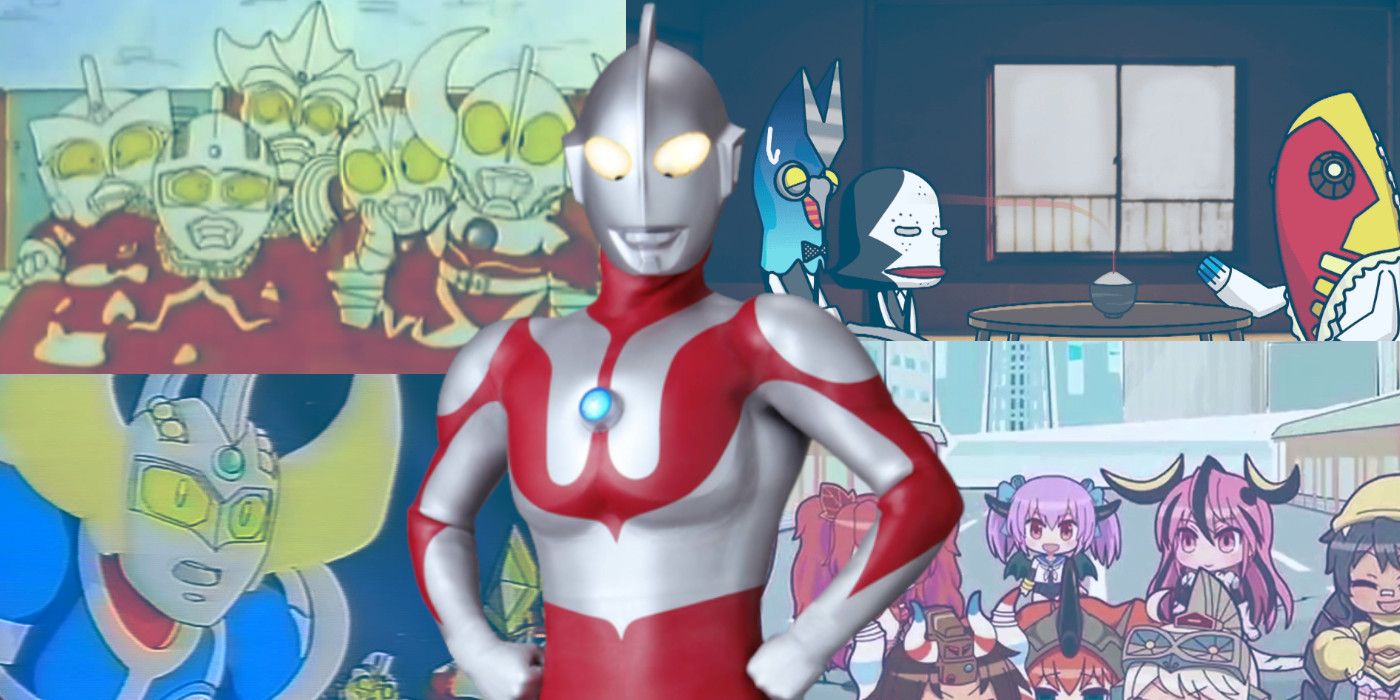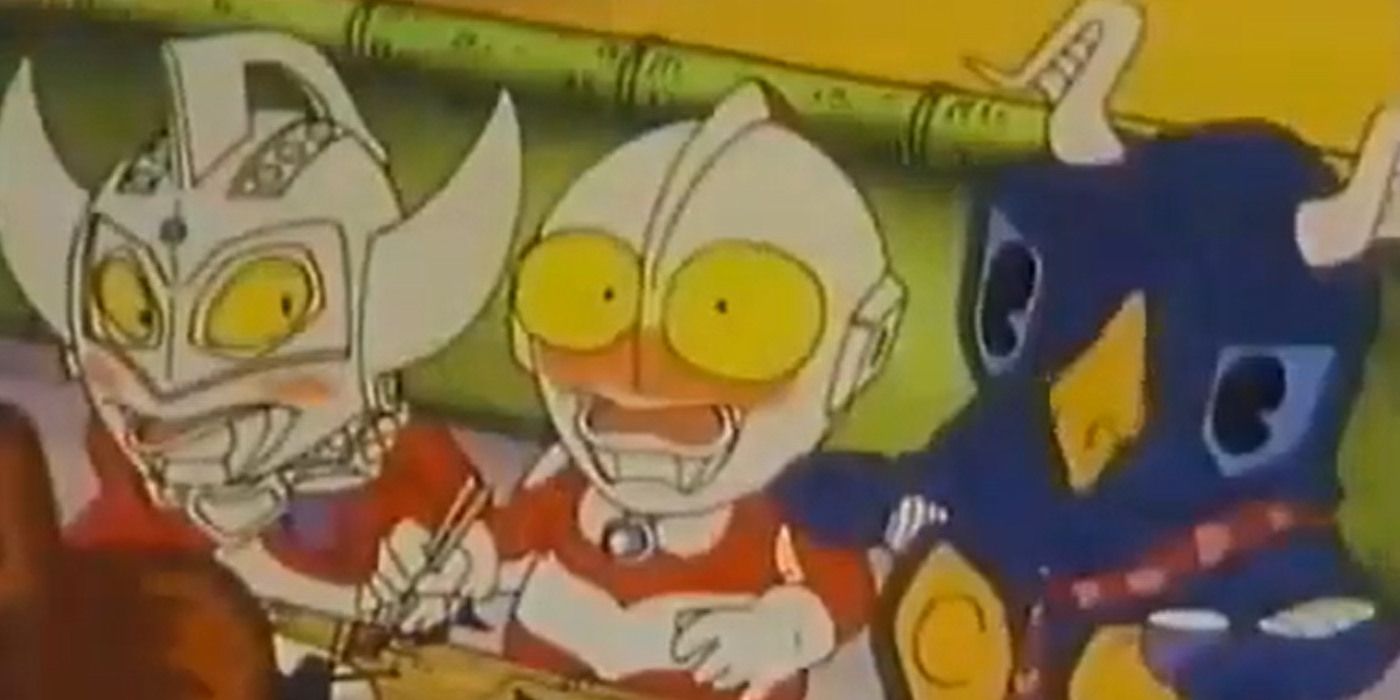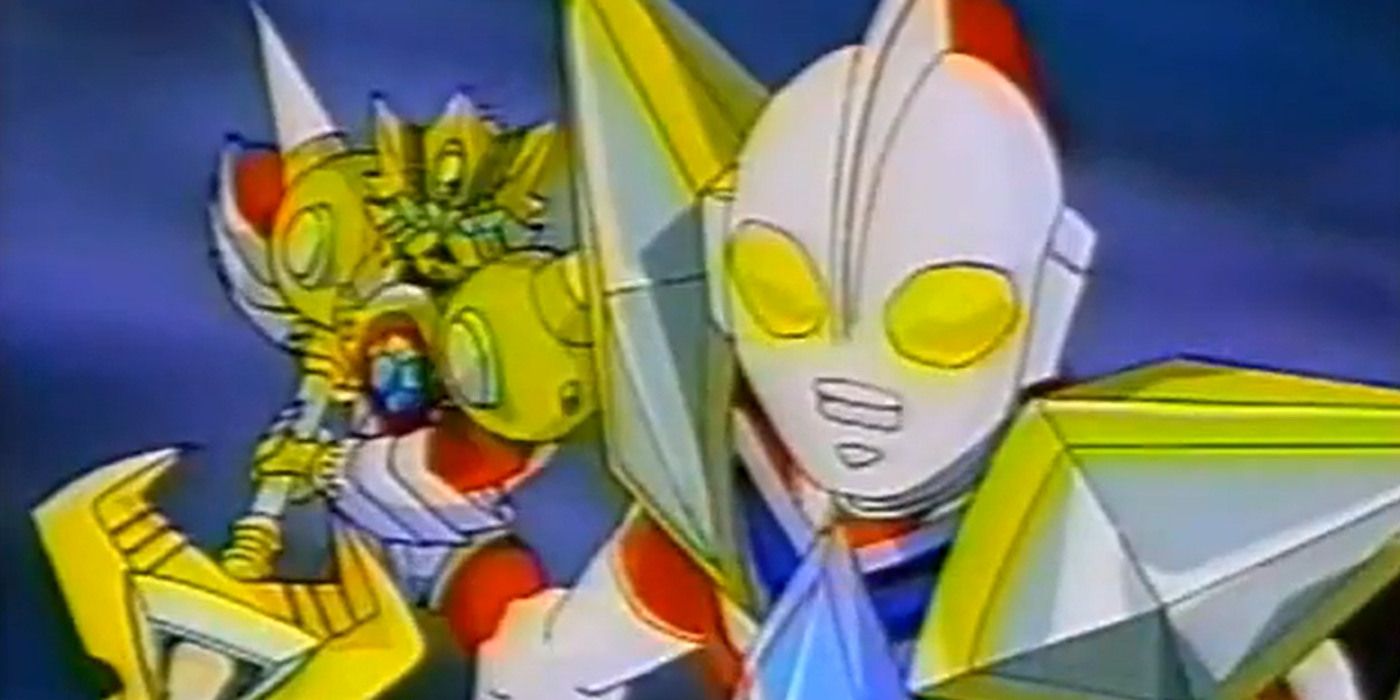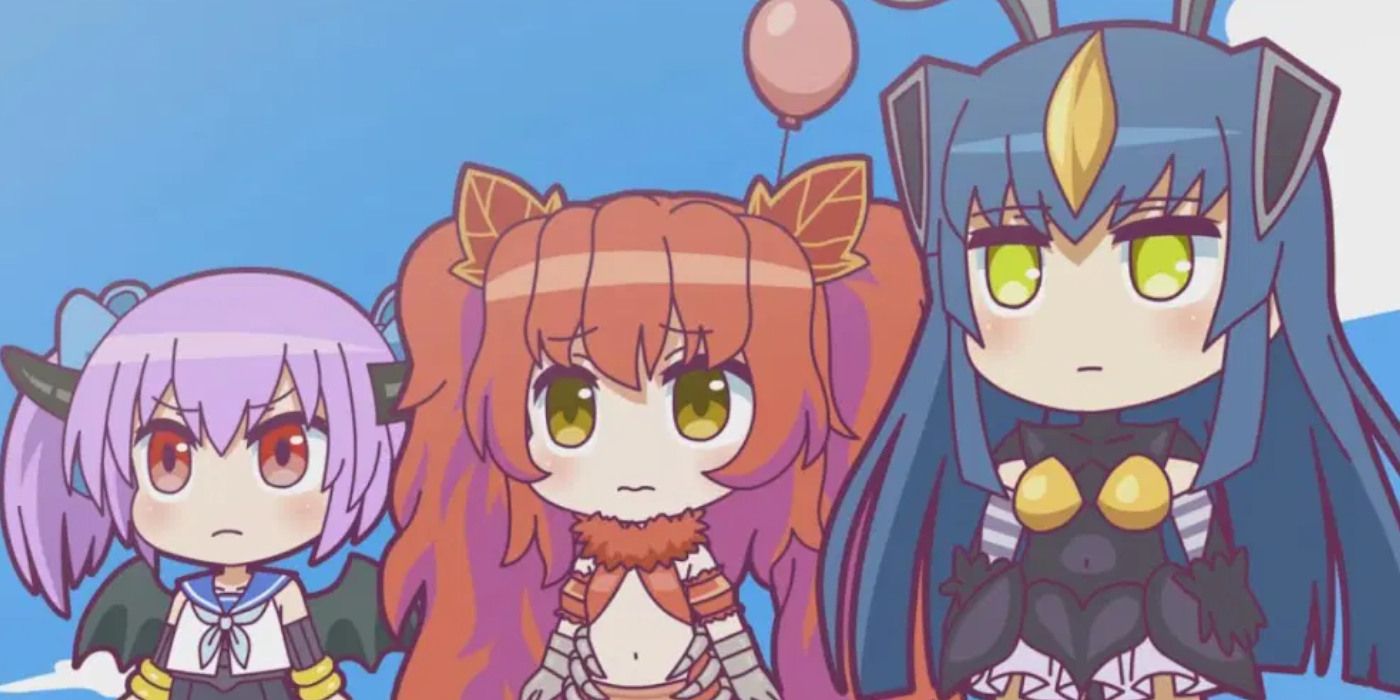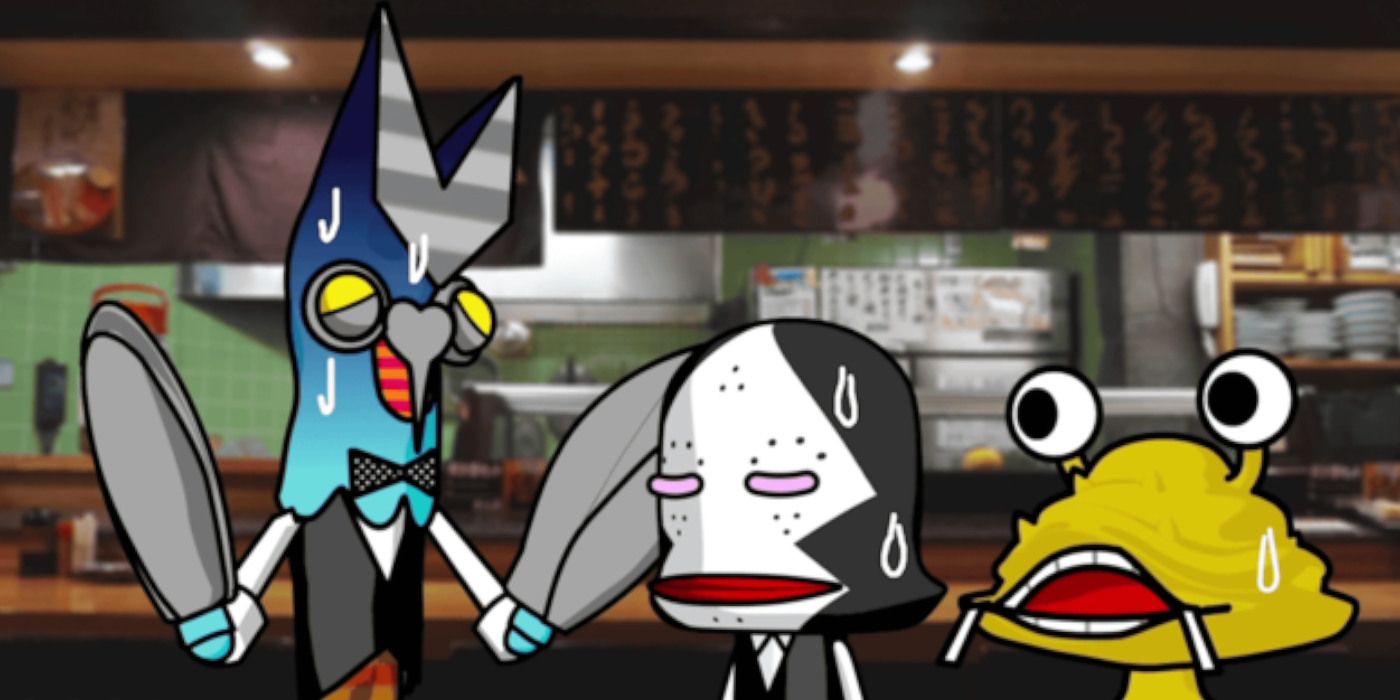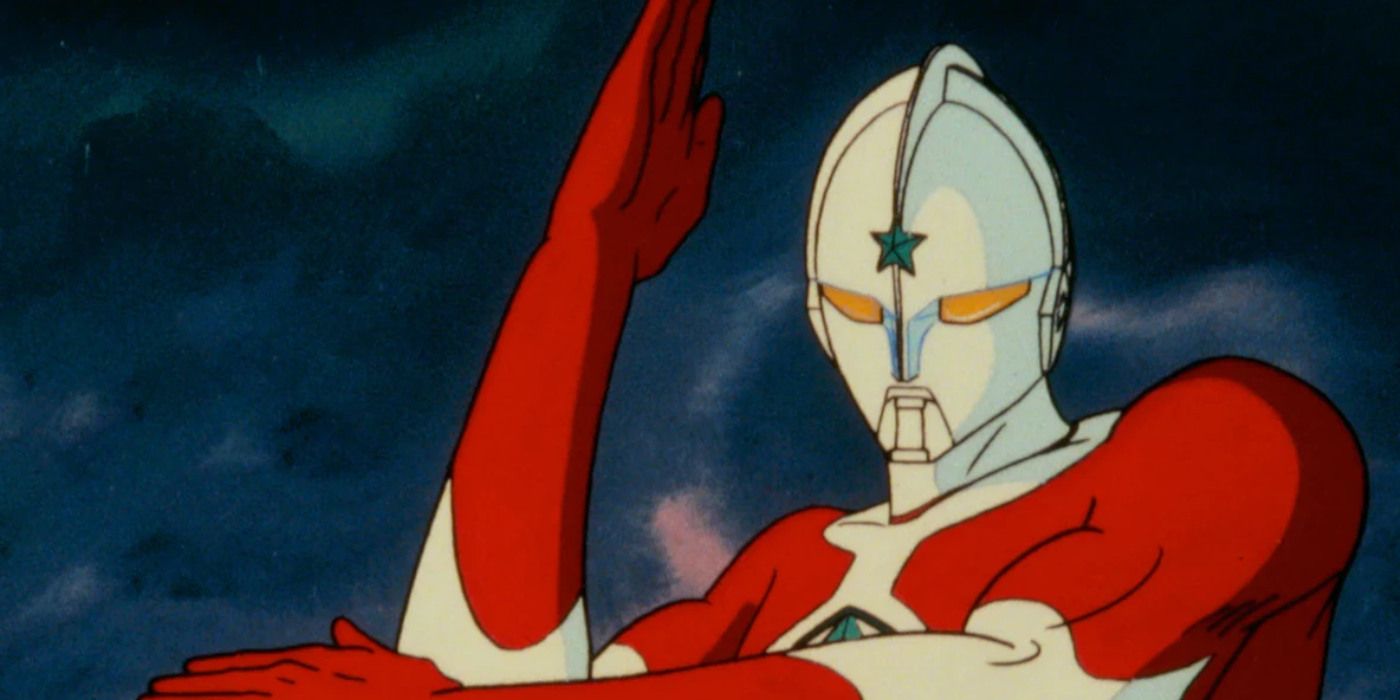Ultraman is a Japanese institution. The franchise's tales of giant heroes fighting monstrous kaiju have resonated with viewers since its debut in 1966, leading the series to move into many different forms of media and spawn countless spinoffs and side-stories. Due to both the Netflix anime and Marvel's Rise Of Ultraman comics, audiences around the world are finally getting the chance to fully enjoy the Ultraman franchise.
But the Netflix adaption isn't the only time Ultraman has used the medium of anime to tell its stories. In fact, there have been many different Ultraman anime. While some follow the action formula of the tokusatsu show, others take the franchise in new directions.
Ultraman Graffiti: Wild! Ultra Country
The Ultraman Graffiti series was a six-episode OVA that featured classic Ultraman heroes and kaiju redrawn in a cute chibi style. Rather than the usual superhero storylines, this OVA series recast Ultraman as a humble salaryman who has to deal with all of the trials and tribulations of office and family life.
The highlight of this series is seeing Ultraman's various powers and the kaiju's unique physiology being used in the context of modern work. Seeing a kaiju use its claws to punch train tickets or prepare vegetables is an utterly adorable sight. And that cuteness combined with the silly humor makes Ultraman Graffiti: Wild! Ultra Country a very charming and enjoyable series.
Ultraman: Super Fighter Legend
Released in 1996, the Ultraman: Super Fighter Legend OVA was based on the gashapon toy line of the same name. This line of toys proved so popular that it was adapted into a manga, which was then adapted into this OVA.
In the year 3026, peace has spread throughout the cosmos. To celebrate its 100th anniversary of joining the Galactic Federation, Earth holds a special tournament called the Galactic Strongest Tournament, with all of the competitors aiming to become the new "Super Fighter." But all is not as it seems and soon the various Ultramen are drawn into a fight for the safety of the galaxy. To overcome these new foes, they must use all of their powers, as well as several new ones, that are exclusive to this OVA.
Kaiju Girls
Ultraman's kaiju are just as popular as the heroes and it isn't unusual to see spinoff media focused on them. One example of this is Kaiju Girls, which was a series of anime shorts that ran for two seasons. As Japan enters an age of peace, something strange happens. A group of girls finds that they have the souls of kaiju resting within them. And, when they channel these souls, they can transform into kaiju.
The girls are recruited into an organization called GIRLS. This organization hopes to use the girls to keep the peace, forcing the girls to quickly adapt to their new powers, as well as their new lives. Kaiju Girls is a cute and fun subversion of classic kaiju tropes. If you're a fan of cute comedy then this is worth watching even if you're not familiar with Ultraman or its lore.
Kaiju Sakaba Kanpai!
Another kaiju-focused anime, Kaiju Sakaba Kanpai! was a 13-episode anime that focused on the legendary kaiju Baltan as he tried to manage his own bar. This bar was staffed by several other Ultraman kaiju, including Kanegon, Dada and Pigmon.
Interestingly, Kaiju Sakaba is actually a real place! In 2014, it was located in Kawasaki Station, but it closed after a year of operation. However, a nearly identical bar opened in Kawasaki City a few months after the old one closed. Baltan was even present for the grand opening. Much like Ultraman Graffiti and Kaiju Girls, seeing these larger than life characters trying to deal with modern real-world problems is fun and charming, and the setting allows the writers to poke fun at the silliness of modern life.
The☆Ultraman
The☆Ultraman is a rather unique Ultraman anime. Rather than being a spinoff, it is part of the main continuity. It was also the first time Ultraman had appeared in animated form. It was the eighth installment in the Ultraman franchise and came out in 1979, four years after Ultraman Leo, the previous entry in the series. This series was animated by the studio Nippon Sunrise, which would rocket to stardom later in the year due to its work on Gundam.
When strange monsters start appearing on Earth, Chōichirō Hikari ends up bonded with Ultraman Joneus, an ultra person who was sent to help protect Earth from these monstrous threats. Together, Chōichirō and Ultraman Joneus do their best to keep Chōichirō's identity a secret while uncovering an alien invasion plot that has links to the Ultraman's home planet.
Interestingly, this series actually got an English dub. In 1980, New York superstation WOR-TV Channel 9 aired Episode 14 as part of its "Japan Tonight!" block. This block contained seven hours of content from the Japanese network TBS. The episode was introduced by Japanese TV host and author Tetsuko Kuroyanagi, who gave viewers a brief overview of the Ultraman franchise.
This series would also get two English video releases. The first, entitled The Adventures of Ultraman, edited together footage from the end of the series and redubbed it with a new story. The second, Ultraman II: The Further Adventures of Ultraman was a dub of the first four episodes of the series. Despite being billed as a sequel, this second film had no continuity with the first dub and changed the characters' names so that they were neither the Japanese names nor the names from the original dub.

